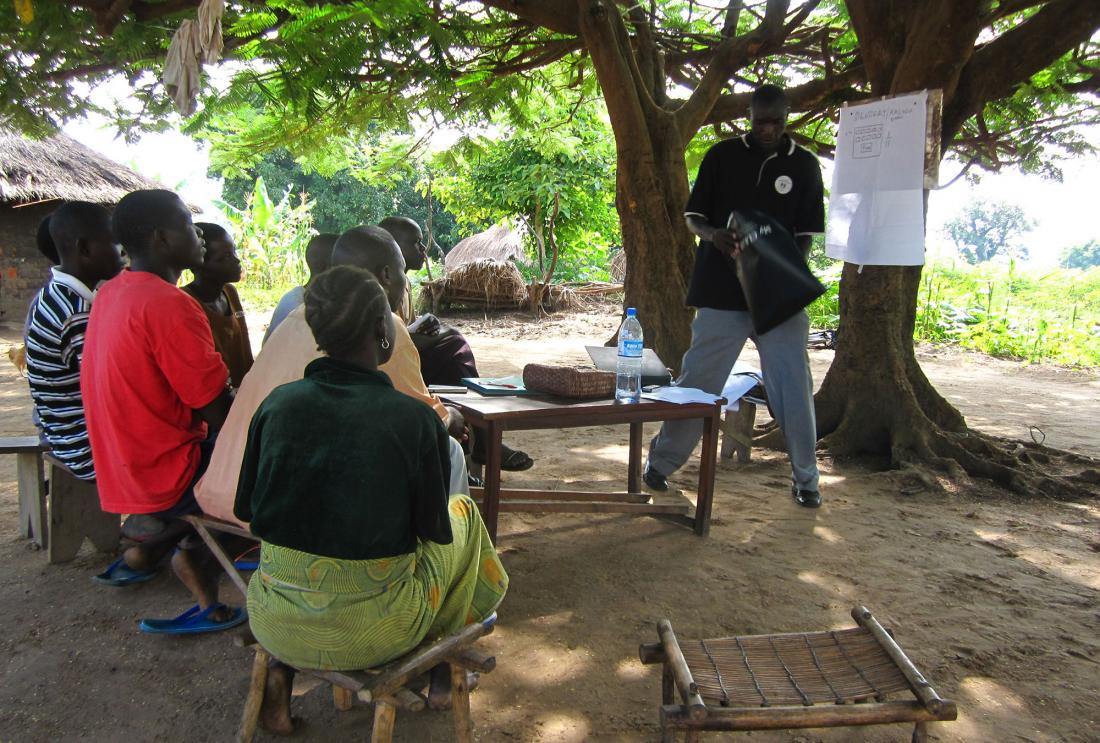Teaching Savings Practices to Ugandan Youth
- Youth
- Earnings and income
- Savings/deposits
- Financial literacy
- Savings
- Training
Policy issue
Programs promoting financial literacy and savings among the poor have become popular in recent years, in hopes that they may enable individuals and families to meet their financial demands. Developing a financially educated population may help promote large-scale change in a country’s economic situation by increasing the savings rate and thereby smoothing individual consumption and increasing investment in productive resources. At this point, however, very little information exists as to whether or not financial education significantly improves savings behavior. Particularly, the impact which financial literacy programs can have relative to other means of promoting savings, such as designing group savings accounts that leverage peer pressure, is not known. Quantifying this impact can help researchers understand what drives financial decisions, and enable policymakers to fund programs that will have the largest impact on savings behavior.
Context of the evaluation
The population of Uganda is disproportionately young: 52 percent of Uganda’s population is under 15 years of age and 29 percent of the country’s adult population is between 15 and 34 years of age.1 In addition to being very young, the population of Uganda has extremely low savings rates, even relative to its sub-Saharan neighbors, which on average have the lowest savings rates in the developing world. Between 2001 and 2003, for example, Uganda’s average savings rate was 5.2 percent. Its neighbor Kenya, by comparison, had an average rate of 12.7 percent for the same period.2 Uganda’s current savings rate remains alarmingly low, at 10 percent.3
Founded in 1984, the Foundation for International Community Assistance (FINCA) International’s mission is to provide financial services to the world’s lowest-income entrepreneurs. FINCA Uganda was founded in 1992, and has experience and expertise in providing financial assets, as well as, youth-oriented savings products to the world’s lowest-income entrepreneurs.

Details of the intervention
The Church of Uganda maintains a large network of youth fellowship groups, based out of village churches around the country. These groups were targeted for this intervention because they offer a high level of trust among members, as well as, a high degree of consistency across the different groups, relative to other youth group structures in Uganda. Each group has an average of 25 members with a well balanced mix of genders and occupations.
This evaluation examines two interventions: a financial education curriculum (a knowledge-based intervention) and a specially-designed youth group savings account (an access-based intervention). The curriculum was developed in partnership with Straight Talk Foundation – a highly successful Ugandan organization specializing in communication to youth – based on the Your Future, Your Money curriculum from the Global Financial Education Program and materials from Binti Pamoja, an organization that promotes the rights of teenage girls.
The ten-session, fifteen-hour curriculum focused primarily on teaching concepts and skills for improving savings behavior, ranging from role-playing the differences between saving and borrowing to achieve a goal, to how to keep a budget, to strategies for successfully discussing sensitive topics around money.
The group savings account was designed without fees and with simple account-opening procedures to minimize the barriers that were found in focus group discussions to most discourage young Ugandans from opening accounts.
Two hundred forty church groups, representative of all of Uganda’s regions, were selected based on their level of activity and access to district capitals. The sample population was randomly assigned into four groups, including one group which received neither intervention and served as the comparison group:
Treatment group A - Offered/encouraged to open youth group savings account and financial literacy training.
Treatment group B - Offered/encouraged to open youth group savings account only.
Treatment group C - Financial literacy training only.
Treatment group D (comparison) - No account or financial literacy training offered.
In total 120 groups were offered the financial education program by FINCA-hired and IPA-managed financial educators and 120 groups were offered the group savings account.
Results and policy lessons
Results forthcoming.
1 Uganda Bureau of Statistics (UBOS) and Macro International Inc. 2007. Uganda Demographic and Health Survey 2006. Calverton, Maryland, USA: UBOS and Macro International Inc.
2 Bank of Uganda research department, Sept. 14, 2005. Found in “Savings Habits, Needs and Priorities in Rural Uganda.” Prepared by Richard Pelrine, Olive Kabatalya. Rural SPEED and Chemonics International. Produced by USAID, September, 2005.
3 Dovi, Efam, “Africa: Boosting Domestic Savings on the Continent.”
Uganda Bureau of Statistics (UBOS) and Macro International Inc. 2007. Uganda Demographic and Health Survey 2006. Calverton, Maryland, USA: UBOS and Macro International Inc.
Bank of Uganda research department, Sept. 14, 2005. Found in “Savings Habits, Needs and Priorities in Rural Uganda.” Prepared by Richard Pelrine, Olive Kabatalya. Rural SPEED and Chemonics International. Produced by USAID, September, 2005.

